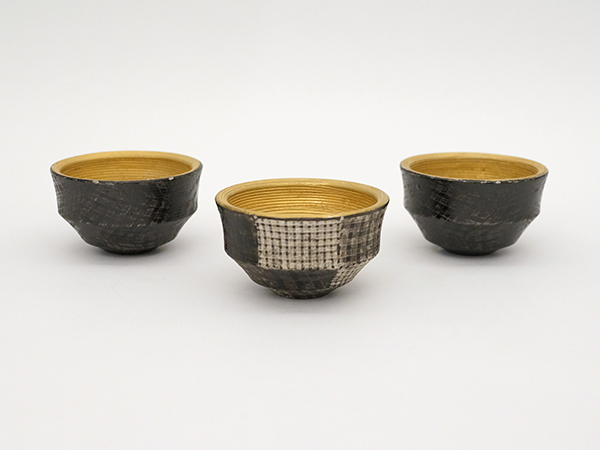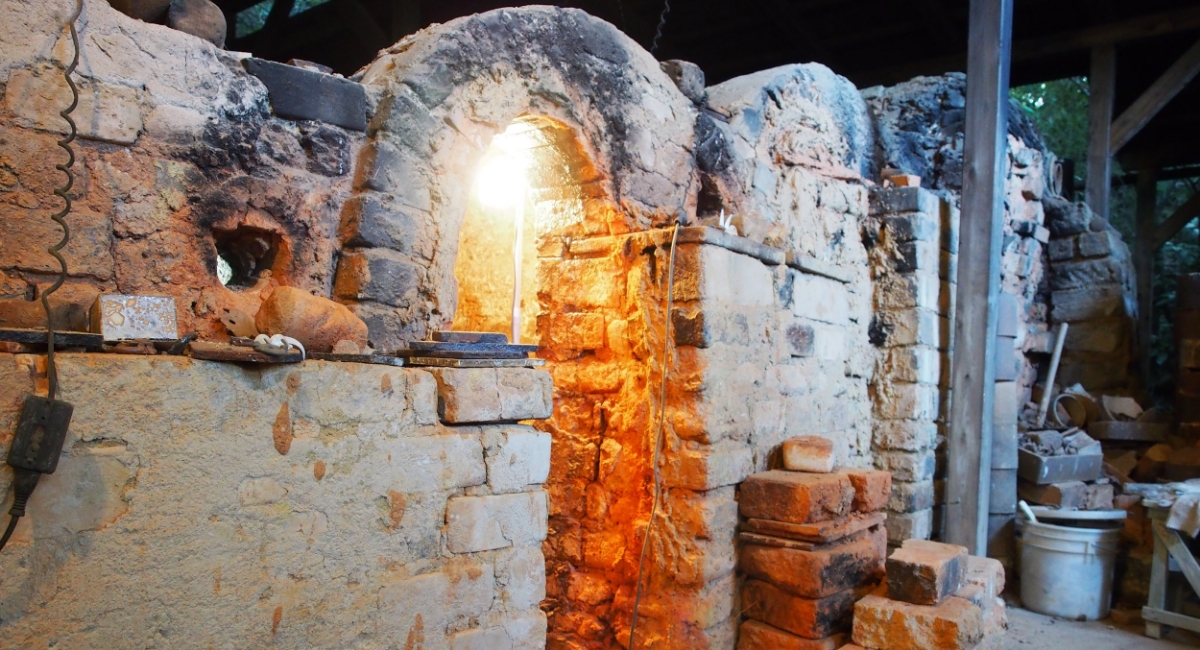Japanese Pottery: Embracing Simplicity and Imperfection
What makes Japanese pottery so intriguing? Bowls, plates, mugs—everyday items that usually hold little value in the West—appear to carry profound significance in Japanese history and culture.
Often unassuming, each piece reflects the potter’s aji (character, taste) and decades of experience in the craft. This art is not isolated: it is deeply connected with Zen Buddhism and the famous Japanese tea ceremony. Let’s dive a bit into the history.
A Brief History Lesson
Japanese ceramic history goes back thousands of years, from the Jomon period, with earthenware used mainly for cooking or storing food, to the Yayoi and Kofun periods, when haniwa terracotta figures appeared. In the 5th century, techniques from Korea introduced Sue ware, the first stoneware fired at high temperatures, where natural ash glaze was also discovered. By the Heian and Muromachi periods, regional kilns such as Bizen, Shigaraki, and Tanba were producing robust unglazed stoneware, widely used across Japan.
Yet the most important turning point was the introduction of Zen Buddhism into the country and the birth of the tea ceremony, during the Kamakura period (12th–13th century) all the way to its refinement in the Momoyama period (late 16th century) thanks to the tea master Sen no Rikyu and his wabi-cha principles of simplicity, imperfection and humility. Later in the Edo period, porcelain was produced for the first time in Arita, which quickly became famous and highly sought after in Europe as well.
The Zen aesthetic shaped Japanese ceramics and art all the way up to the present day. Restrained and simple styles came to be highly valued. The lack of symmetry and balance was expressed not only in ceramics but also in landscaping, architecture, poetry, flower arrangements, and beyond. The tea ceremony itself embodies these values: being mindful of the chawan (tea bowl) in which tea is served is a crucial step, showing deep appreciation for the potter’s effort and artistry.
All the pieces shown belong to Masahiro Maeda
Three Main Categories of Pottery
Although there are many types of pottery, they usually fall under three main categories (following a Western classification): earthenware, stoneware, and porcelain. These differ in clay type, hardness of the biscuit, density, water absorbency, and glaze use.
The most ancient is earthenware, a low-fired ceramic with a porous body. Although fragile, it was suitable for cooking and food storage.
Stoneware, on the other hand, is fired at high temperatures (around 1100°C). It has a dense, non-translucent body and is usually glazed. It could be said that it has been the most widely used style in Japan, as it reflects the rustic and humble spirit mentioned earlier.
Finally, porcelain—originally from China—is a white ceramic with a high proportion of vitreous qualities. Fired and glazed at temperatures of around 1300°C, it produces thin, translucent pieces with almost no water absorption, resulting in the most delicate and exquisite wares.
Fabrication Techniques
Another key differentiating factor is the fabrication method and technique. The most ancient methods, seen in Jomon pottery, are coiling and paddling. Coiling involves building walls by stacking ropes of clay, useful for making large vessels. Later, paddling, beating the surface with a paddle helped solidify and flatten the walls while creating form.
As old as these techniques, pinching has always been widely used. It consists of hand-building from a lump of clay using only one’s fingers, usually for smaller and more delicate pieces. It may appear simple, especially for beginners, but one quickly realizes that creating a piece with this method that moves the viewer and conveys the maker’s style is far more difficult than it seems.
Other techniques worth mentioning are slab building (used to construct square pieces by attaching slabs) and molding, suitable for mass production or sculptural forms.
Last but not least, wheel throwing is often a headache for beginners—and even for experienced potters. A piece of clay is placed on the wheel and the walls are lifted using rotation speed combined with hand pressure, followed by trimming once the piece is almost dry. Interestingly, unlike in the West, the wheel in Japan rotates to the left—why? While there are several explanations, it mainly comes down to natural hand-motion preferences. Another fun curiosity is that even if a potter is proficient at throwing stoneware clay, simply switching to porcelain clay can be truly troublesome, as it moves and behaves completely differently. While beautiful, it will always remain a cheeky material.
Glazes: From Ashes to Art
The art of glazing is key to Japanese ceramics. Many glazes are made from simple, natural ingredients; most commonly ash, clay, and minerals such as iron or copper oxides. Potters often create their own unique recipes, sometimes even producing ash from specific trees or rice straw they burn themselves, adding a deeply personal and poetic touch: from ashes, beauty emerges.
What makes Japanese glazes distinctive is the embrace of unpredictability. The result also varies greatly depending on whether a wood-fired kiln or an electric kiln is used. The fire and falling ash leave markings that no potter can fully control, creating surfaces that are always unique. On the other hand, electric or gas kilns are more predictable, making them ideal for mass production. This means that the very same glaze can look dramatically different depending on the kiln chosen.
Shapes, Words, and Purpose
Shapes and purpose are another curious Japanese element. While in the West the word “bowl” is used generically, in Japan there are numerous terms and kanji to describe specific forms, proportions, and uses, revealing how this linguistic richness mirrors the cultural importance of the art. For instance, even just among chawans (tea bowls) there are several shapes, each with its own name. The Kumogai-gata (熊川形) has softly rounded walls, the Ido-gata (井戸形) is wide with a broad mouth and a slightly raised foot, and the Tenmoku-gata (天目形) rises more steeply, reminiscent of Chinese tea bowls. Other forms include Hira-gata (平形), flatter and open; Tsutsu-gata (筒形), tall and cylindrical; and Hadazori-gata (端反形), with flaring lips. Depending on the season, different shapes are chosen during the tea ceremony, to preserve the heat in winter, or on the contrary, to help cool the tea in the hottest months.
Another detail often disregarded in the West is the kodai, the base or foot of the vessel. Far from being purely functional, it is a key aesthetic element that reveals the potter’s style. Usually, the potter’s seal is impressed into the base, adding individuality. In the tea ceremony, one is often asked to appreciate the kodai as a beautiful detail into which much thought has been put. It is frequently left unglazed to prevent the piece from sticking to the kiln floor.
Where Clay Meets Flame
Speaking of kilns, there are various traditional ones in Japan such as the anagama: a tunnel-like kiln built into a hillside, with a door and firebox at the lower end. The heat and flames travel upwards through the tunnel, firing all the pieces inside. If the structure is divided into multiple chambers rather than a single one, it is called a noborigama. Unfortunately, these kilns are very time-consuming, require a large amount of wood to feed the fire, and are unpredictable. As a result, electric or gas kilns are much more common today.
However, many natural kilns are still active across Japan, and knowing how to manage a firing is considered an art in itself. A naturally fired piece is far more appreciated, as it always carries an unpredictable and unique result. You can actually see the path of the flame etched into the vessel: hi-iro, literally “fire color.” The falling ash also leaves its mark, melting into glass-like greenish or brownish surfaces. This all ties back to Zen Buddhist culture and its appreciation of the imperfect and asymmetrical.
Beauty in the Imperfect
Japanese pottery conveys honesty and beauty—even though achieving such simplicity requires decades of mastery. Through clay, fire, and the hands of the potter, everyday vessels become expressions of imperfection, delicacy, and tradition: quiet traits of a culture that finds depth in the simple and the unrepeatable.





